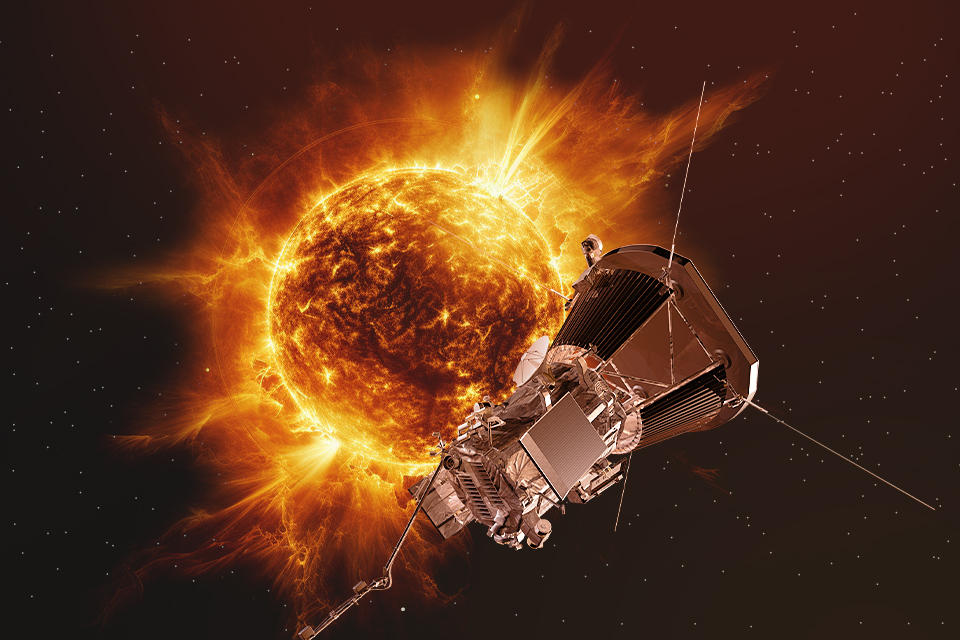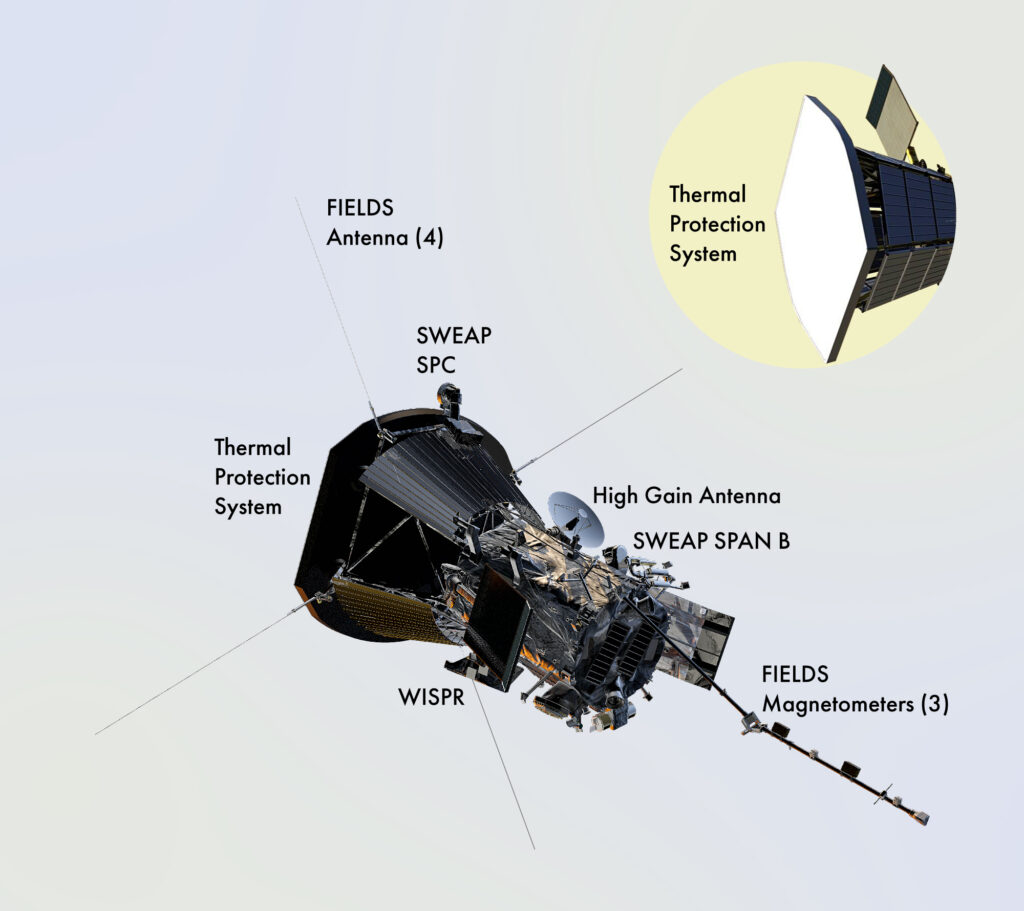The Parker solar probe has made its sixth flyby near Venus. On September 23, it should pass the perihelion, the closest point of its orbit to the Sun. This spacecraft comes so close to the Sun that it literally “dives” inside it. There are several questions about it and we have answers to them.

1. What is the Parker probe for?
The main purpose of the Parker probe is to study the solar corona. This is the outermost part of the atmosphere of our luminary. The plasma in it is extremely sparse, but at the same time it is heated to millions of kelvins, which is much higher than those layers that are under it.
The reason for this is the magnetic fields that accelerate particles to enormous speeds. In order to understand how this happens and what processes accompany this phenomenon, Parker was created. It should come closer to the solar corona than any spacecraft before it. In addition, the probe should explore our luminary as a whole.
2. How close does Parker fly to the Sun?
Parker flies around the Sun in a highly elongated orbit and once every few months approaches it at a minimum distance. This point of its orbit is called the perihelion. In the last few approaches to our sun, the distance from it to the probe was 9.2 million km. However, in early August 2023, the probe made a maneuver near Venus and on September 23 should set a new record, approaching a distance of 7.9 million km.
In the future, it should come even closer to the Sun — at a distance of 6.9 million km, which corresponds to 9.82 of the radius of our luminary. This is several times closer than any other human-made spacecraft has come before.
3. Why doesn’t Parker burn down?
At such distances from the Sun, the spacecraft receives a large amount of energy that comes to it. As a result, it would quickly get heated to temperatures that would disable its sensitive sensors. However, those parts of them that during the approach to the luminary will be located outside are reliably protected from high temperatures. An example here may be the antennas of the FIELDS magnetic field research instrument, which are made of niobium alloy.
The rest of the equipment during close flights will be hidden behind a heat shield made of carbon foam, 11.4 cm thick, which is covered with aluminum. It must withstand a temperature of 1370 °C.
4. How long has Parker been flying?
NASA finished constructing the Parker probe and launched it into space in 2018, although the development of this mission has been underway since the 1990s. Since then, it has been circling the Sun, gradually approaching it thanks to maneuvers near Venus. Each of them slows down the spacecraft a little, forcing it to come closer and closer to the luminary.
During 5 years of flight, the Parker solar probe made 6 maneuvers near Venus and passed its perihelion 16 times. During this time, it managed to make a lot of scientific observations of our luminary and the second planet from it.

5. What will happen to the Parker probe next?
Over the next 15 months, Parker should go through its perihelion four more times. After that, it is waiting for the last, seventh flight of Venus, which will take place in November 2024. During it, the spacecraft will move into orbit as close to the Sun as possible and will make five more approaches within a year.
It is expected that it will make the main discoveries during them, since at this moment it will practically “dive” into the solar corona. In addition, it is possible that at this moment it will become the fastest vehicle created by humans. Its speed can reach 194 km/s.
Follow us on Twitter to get the most interesting space news in time
https://twitter.com/ust_magazine

